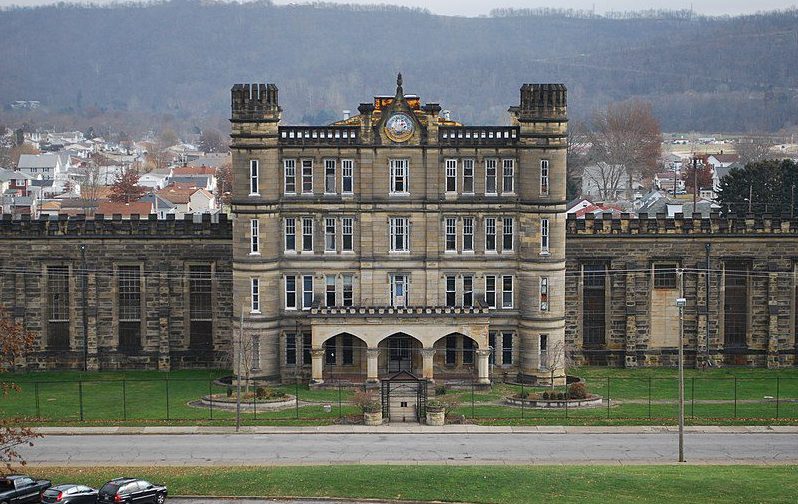The Architecture of Punishment

We incarcerate criminals for four reasons: incapacitation, rehabilitation, deterrence, and vengeance. Each of the four is believed to serve a social function. Incapacitation protects society from the offender. Rehabilitation prevents the offender from re-offending in the future. Deterrence prevents would-be offenders from committing offenses in the first place. Vengeance—what a Thomist would call penal satisfaction—repairs the rift in the social order created by the underlying criminal conduct.
Deterrence and vengeance form the basis of what traditional penology calls the “principle of less eligibility,” that is, the belief that incarcerated persons should not be afforded greater comfort and amenities than society affords the worst-off free persons. Proponents argue that aside from being a matter of simple justice—why should criminals be treated better than law-abiding citizens?—a harsh penal environment serves both to deter would-be offenders and exact retributive justice.
You can find the four-fold theory of penological justice and the principle of less eligibility more or less persuasive. (As TAC’s resident squish on criminal-justice issues, I’ll say I’m not convinced that locking people in a cage for years is preferable to, say, corporal punishment.) Whatever one’s position, traditional penological theory has made an indelible mark on the brick-and-mortar structures that comprise America’s prisons.
Traditional prison architecture—mostly built before 1945—is large and imposing, and often incorporates classical elements like porticos and colonnades. These structures impress the public and convict alike and serve both practical and symbolic purposes. Consider the tall, castellated exterior of New York’s Attica Correctional Facility—aside from its obvious utility as an impenetrable barrier between prisoner and the world outside, Attica’s fortress-like retaining wall serves as a public monument to punishment, a visual deterrent to passersby and would-be offenders.
Outfitting a prison with entablatures and dentil molding would seem offensive to the principle of less eligibility. If the only goal of incarceration were to maximally immiserate the offender—if vengeance and deterrence were prison’s only purpose—ornamented prison walls would be an intolerable excess. But by the early 20th century, humane architecture was seen as an essential element of rehabilitation. Hastings H. Hart’s 1922 collection of prison and reformatory plans contains architect Lewis Pilcher’s observation that “modern penologists are rapidly discarding the old theory that a certain humanity and kindliness should be eliminated from society’s dealings with” criminals and that such developments should be reflected in penal architecture.
Earlier prisons were built in an agricultural age, a fact obvious in their construction. Many pre-1960s lockups were built in rural outposts with large physical plants, set amid nature and flush with opportunities for labor and activity. It was no Martha’s Vineyard—you were still in prison, and farm work is farm work—but the consolation provided by natural beauty is God’s design and man’s birthright. In legacy institutions like Louisiana State Penitentiary (“Angola”), the blessings of nature to the inmate persist. The rural environment served at least two of the traditional goals of incarceration: It incapacitated the offender, setting him apart from society, and offered him rehabilitation in the form of farm work and a setting conducive to introspection. By contrast, most modern penal institutions were built with little green space and without opportunity for farm work, inevitably resulting in designs that crush the human will.
Individual prison plants stand out for striking a balance between the four traditional aims of criminal justice. Clinton Correctional Facility in New York, built as Dannemora State Hospital for the Criminally Insane in 1899, has a striking façade and an expansive physical plant, with a unique system of “courts“—small sections of the yard divided among prisoners for gardening, grilling, and recreation—that provides inmates a sense of ownership and dignity. Away from their families and separated from life on the outside, there can be no question as to the fact of their punishment. Still, the built environment—the façade and landscape, at least—is conducive to the rehabilitative aim of incarceration, and the buildings themselves are pleasant to the eyes of inmate and passerby alike.
Any form of incarceration necessarily fulfills the requirements of vengeance and deterrence—to be dragged away in handcuffs, mugged and fingerprinted, publicized for one’s misdeeds, and separated from family and community is unquestionably punitive, and the punitive nature of the process alone serves as a meaningful deterrent to would-be offenders. If the prison to which the offender is sent is structurally sound and geographically isolated, it necessarily fits the demands of incapacitation. All that remains, in the classical view, is rehabilitation.
It is reasonable to ask why we should care about rehabilitation, and why, by extension, we should care about the built environment that surrounds prisoners during their period of confinement. After all, it is said that they have it coming—they broke the law, created a rift in the social order, hurt the weak, and made a mockery of our common code. Maybe so. Still, He tells us that He was in prison, and asks us to visit. We should endeavor to make it a humane, if uncomfortable, trip.
This New Urbanism series is supported by the Richard H. Driehaus Foundation. Follow New Urbs on Twitter for a feed dedicated to TAC’s coverage of cities, urbanism, and place.